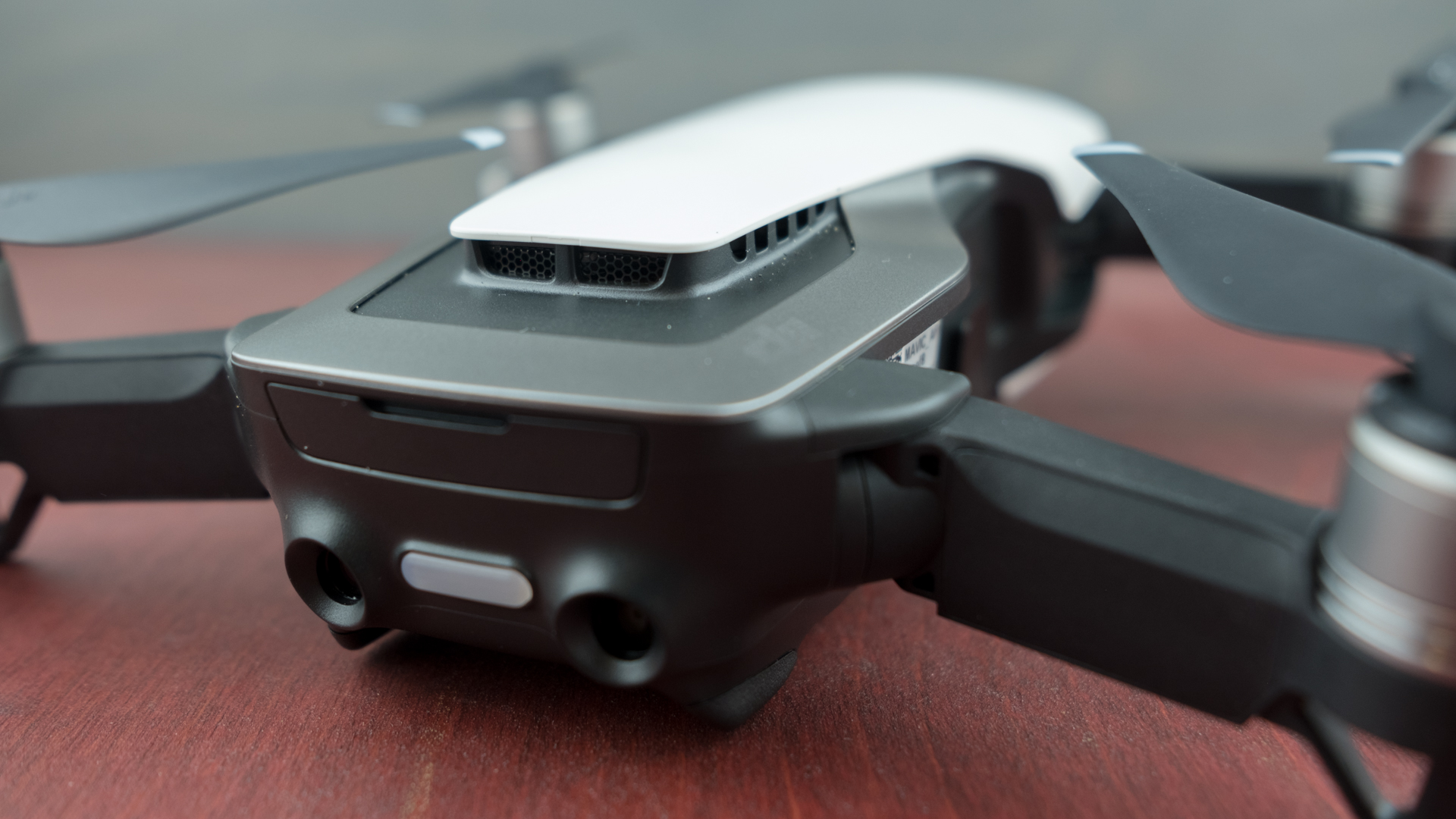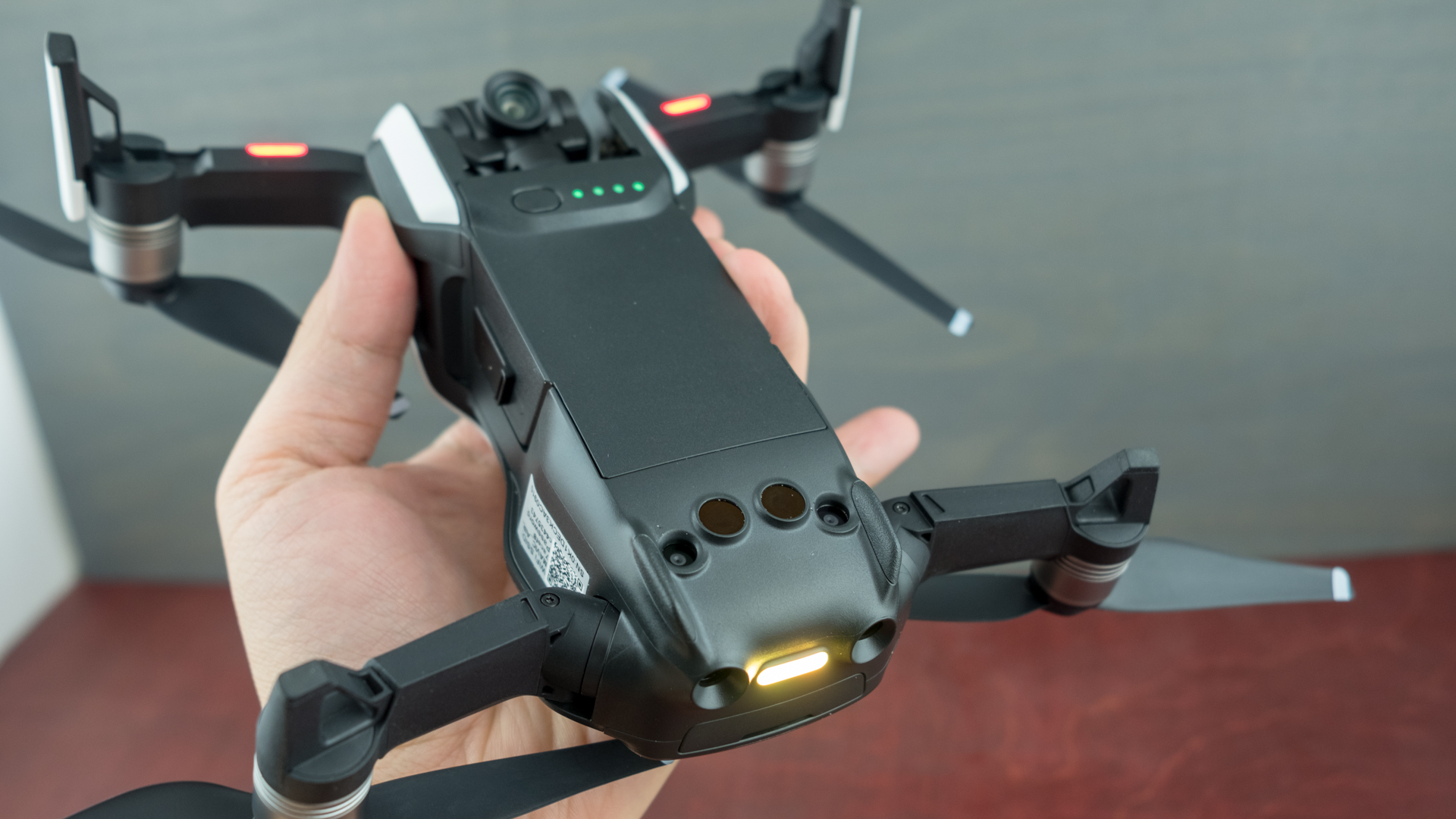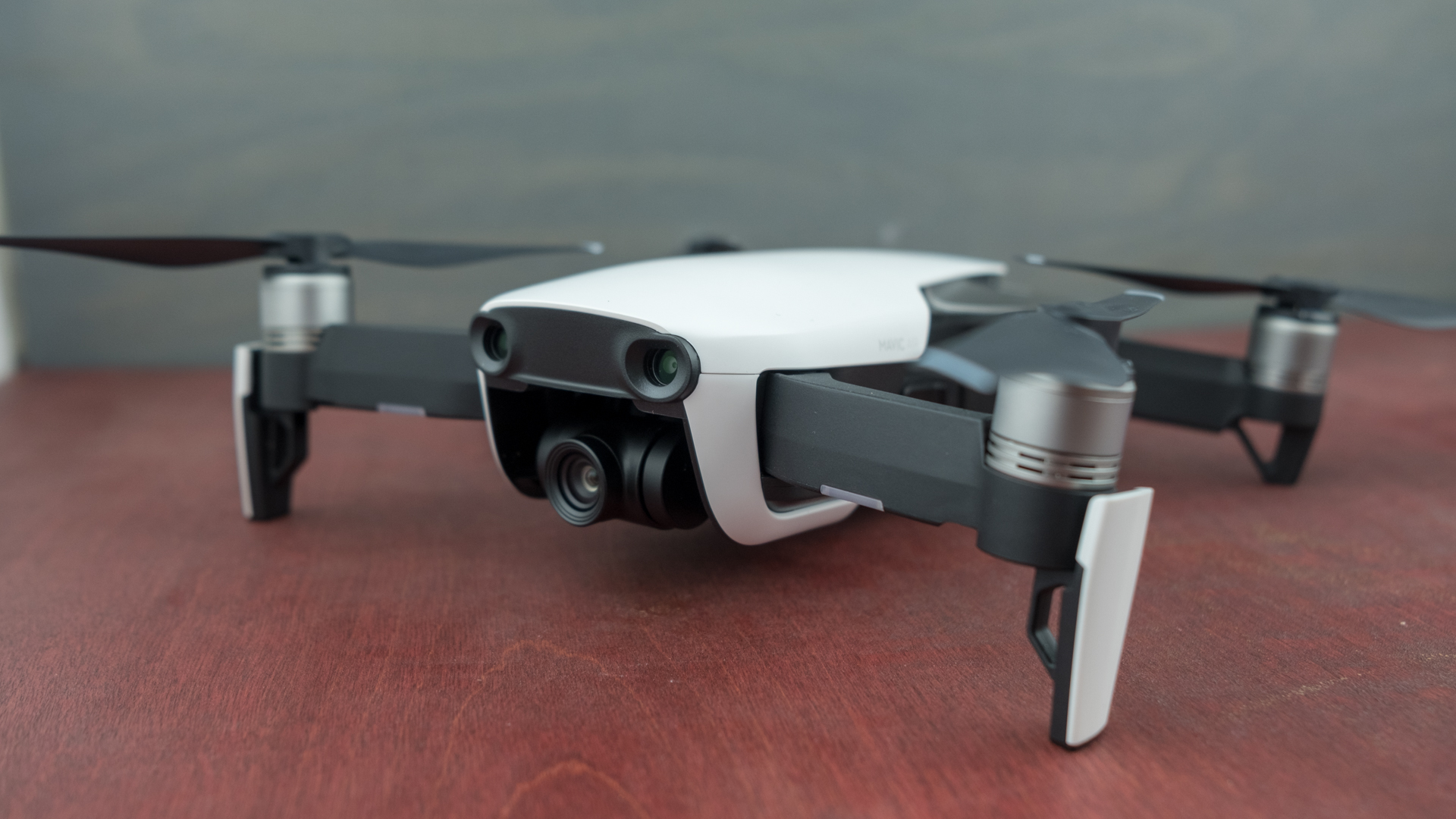Why you can trust TechRadar
Image quality
- 1/2.3-inch CMOS sensor and 4K video at 100Mbps
- 12MP HDR stills; 32MP panoramas
- ISO100 – 1600 for video and stills; ISO100 – 3200 for still in manual mode
- Narrow ISO range doesn’t affect image quality except in low-light conditions
Of course, top flying tech and a stable gimbal amount to nothing if the built-in camera isn’t up to the mark, and thankfully the Mavic Air’s does not disappoint.
The Air shares the same 1/2.3-inch CMOS sensor as the Mavic Pro, but has a narrower ISO range than its bigger brother, meaning it doesn’t do as well in low-light conditions.

The Air’s capable of shooting 4K video at up to 30fps at a bit rate of 100Mbps. Drop the resolution and it can capture 2.5K at 60fps and Full HD at up to 120fps for slow motion. Those specs are great, but it’s the high bitrate that really makes the images pop with life, color and detail.
In well-lit conditions, the Air’s videos are crystal clear, with near-perfect saturation, and there’s plenty of dynamic range to work with despite the small sensor size. In a gloomy setup we did lose some of that vibrancy, however, and our footage looked a tad washed out.

Moreover, the gimbal helps keep everything we shot super stable, so even when the winds picked up and the drone got tossed around a bit, we couldn’t tell from the video.
While you can shoot 12MP stills in HDR, the Mavic Air is also capable of taking panoramas. In addition to the horizontal, vertical and 180-degree panos, the Air can take a series of 25 shots of a scene, then stitch them together in-camera to produce a 32MP panoramic image.
Battery life
- 21 minutes of battery life (fully recharges in 55 minutes)
- Closer to 18 minutes of true flight time per battery
- 3 hours for the remote battery life (recharges in 3.5 hours)
- We recommend Fly More bundle's three batteries and charging hub
The Mavic Air battery life offers increased flight time over that of the Spark. It’s all thanks to the fact that DJI was able to squeeze a 2,375 mAh battery into what appears to be the same size battery as the Spark’s 1,480 mAh battery. That’s an engineering feat.
Sign up for breaking news, reviews, opinion, top tech deals, and more.
The Mavic Air is rated for up to 21 minutes of flight time, though, realistically, you’ll squeeze 18 to 19 minutes of true flight time from a single battery. Like all of DJI’s drones, the Air lands automatically when battery levels are critically low (under 10%). We generally received a low-battery warning at around 15%, which gave us a couple of minutes to do what we were doing and then land it ourselves, or just wait for the automatic safety feature to kick in. All of this is still better than Spark’s 16 minutes of battery life.

It’s also just six minutes shy of the more expensive DJI Mavic Pro flight time of 27 minutes, which is supported by a larger 3,830mAh battery and, for consumers, the top-tier Mavic Pro Platinum’s 30 minutes. If there’s one area in which the Mavic Air makes a small sacrifice, it’s here, but you’re going to have to spend a lot more for six for nine extra minutes in the air.
This is why we recommend Fly More Combo for the Mavic Air with three batteries (and other accessories). It comes down to this: in many countries, especially in cities, it’s difficult to find a legal area and safe space in which you can fly. So hauling this drone somewhere – while ultraportable – for just 18 minutes of flight time is less than ideal.
We monitored the charging time for the DJI Mavic Air battery and found it takes 55 minutes to charge each battery, which syncs up with DJI's official specs for the drone. With three batteries (and a nearby outlet to charge them), you could run the Mavic Air almost non-stop. At least until the controller gives out. That lasts three hours and takes 2.5 hours to charge.
Final verdict
The DJI Mavic Air gets a big thumbs-up from us. It’s the best drone for most people thanks to the fact that it fits top specs inside a pocketable drone form factor. We were able to slip it straight into our backpack without having it weighing us down.
Getting 4K video at 30fps, better battery life, improved smarts and better obstacle avoidance for $799 (£769, AU$1,299) makes this drone a great value.
Although the camera could have been better (DJI sadly hasn’t used the Pro’s 28mm f/2.2 lens on the Air), the footage it captures is still excellent. While the Air manages a top resolution of 3,840 x 2,160 (4K UHD) at 30fps, the Pro is capable of Cinematic 4K (4,096 x 2,160) at 30fps. So, if you’re interested in professional video capture, you’re still better off going with the more expensive Mavic Pro – it also flies further and the Pro Platinum version is much quieter.
For drone newbies, the Spark may seem like a great starting point, if you’re okay with 1080p images. But we’d argue the Mavic Air isn’t a bad starting point either – and it’s not that much more expensive. First timers flying the drone via the app might find it a tad hard to simultaneously pilot the drone and operate the gimbal smoothly, but it doesn’t take long to get used to moving it around. And, by using the more automated QuickShots and tracking features, anyone is capable of pulling off an amazing shot – no experience necessary.
- 1
- 2
Current page: Image quality, battery life and verdict
Prev Page Introduction, price, design and performance
While she's happiest with a camera in her hand, Sharmishta's main priority is being TechRadar's APAC Managing Editor, looking after the day-to-day functioning of the Australian, New Zealand and Singapore editions of the site, steering everything from news and reviews to ecommerce content like deals and coupon codes. While she loves reviewing cameras and lenses when she can, she's also an avid reader and has become quite the expert on ereaders and E Ink writing tablets, having appeared on Singaporean radio to talk about these underrated devices. Other than her duties at TechRadar, she's also the Managing Editor of the Australian edition of Digital Camera World, and writes for Tom's Guide and T3.
